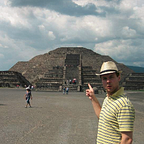Corregidor: An island of war and beauty
As the ferry pulls in to a pine-clad cove neighbouring a gorgeous, ivory-coloured beach, I find it hard to imagine Corregidor Island as the scene of some of the fiercest fighting in the Pacific theatre of World War II.
A strategic outpost guarding Manila from sea invasion since the 1500s, Corregidor was attacked from the opposite direction by the Japanese in early 1942. General Douglas Macarthur, commander of the US Army Forces in the Far East, was forced to flee the island by PT boat to Australia, famously vowing ‘I shall return’.
In two days, a 75,000-strong Japanese army fought their way past 45 pieces of heavy artillery and overwhelmed 13,000 US and Filipino soldiers. Three years later, MacArthur made good on his promise and liberated the island in a daring air and sea assault that turned out to be even bloodier than the first Battle of Corregidor. The US victory was to prove decisive in ending the war in Asia.
When we reach land, I’m ushered into a charmingly retro tour bus that resembles a wartime tram and away we go into the depths of the jungle. We pass the grey, spectral ruins of barracks and mess halls, some held up by shaky foundations either damaged by shelling or worn thin by age.
As we drive, our tour guide holds up a selection of items he’s found strewn around Corregidor, amongst them a Japanese bayonet, a Coca-Cola bottle from 1912 and US and Filipino currency dating back 150 years.
Guns and live ammo
We stop at Battery Way, an emplacement of mortars that still have bullet holes in them, despite a thick and recently applied coat of paint. Our guide tells me to look down the barrel of one of the guns. I do so and see a bomb nestling in the base. ‘That’s still live,’ says the guide, ‘but it is probably harmless.’ I back away with a fake smile.
A delicious lunch of pork adobo and pancit canton (flour noodles with vegetables and seafood) is served on the Spanish-style veranda of the Corregidor Inn. It’s possible to stay the night at the Inn and use it as a base for activities such as kayaking, zip-lining and all-terrain vehicle driving.
The Pacific War Memorial
Our next stop is the moving Pacific War Memorial and its 40 foot-tall abstract sculpture representing the eternal flame. The rotunda features stone-etched memorials to those who died in every conflict the Philippines has been involved in, including the often under-reported Spanish-American War of 1898 when the US wrested control of the archipelago from the Spanish Empire.
For many, Corregidor’s piéce de resistance is the Malinta Tunnel complex, that in its heyday housed a field hospital, an electric tram system, shops, storerooms and General MacArthur’s operational headquarters. The American and Filipino garrison made its last stand against the Japanese inside Malinta and just a few months before that Manuel Quezon was sworn in here for his second term as President of the semi-autonomous Philippine Commonwealth.
Although a close friend of MacArthur’s and a supporter of the US presence in his country, Quezon is reported to have exploded with anger after listening to a speech by President Roosevelt about the war in Europe and shouted, ‘How typical of America to writhe in anguish at the fate of a distant cousin, Europe, while a daughter, the Philippines, is being raped in the back room!’
With the aid of torches, we make our way through the curve-arched main tunnel and peer into alcoves containing life-size metal models of soldiers, engineers, doctors, nurses, MacArthur himself and his second-in-command General Jonathan Wainwright. Normally there’s an audiovisual presentation detailing the history of Malinta, but for technical reasons it isn’t available right now.
I am suitably sobered as we emerge from the tunnel and ride the tour bus back to the ferry port. All in all, Corregidor is a captivating insight into a momentous event in history and a poignant tribute to the thousands of young men who died in the most destructive war of all time.
For more information
Learn more about the history of Corregidor via the Corregidor Island and World War Two History websites.
About the author — Tom Sykes
Tom Sykes’s travel writing has appeared in The Telegraph, The London Magazine, The New African and numerous in-flight magazines. He is currently writing The Bradt Guide to the Ivory Coast. Take a look at Tom’s blog www.tomgsykes.co.uk for more of his work.
